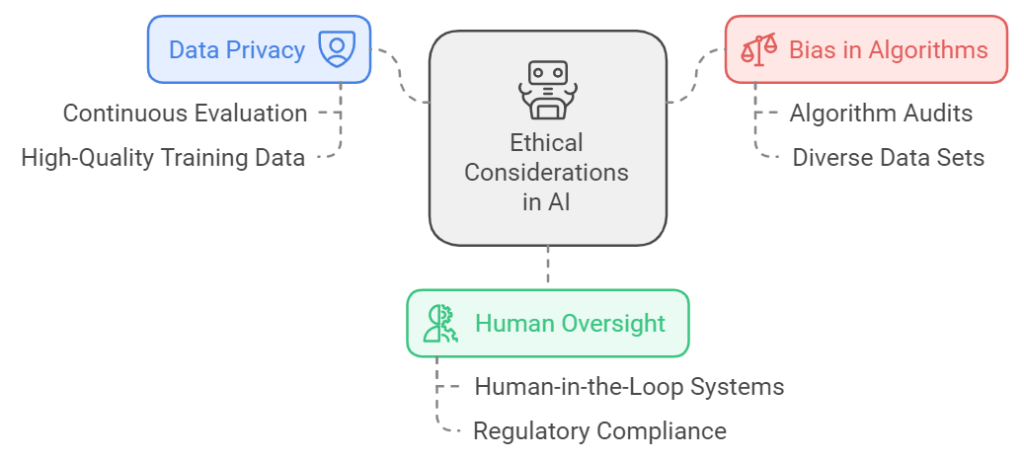The Future of
Real-Time Translation
18
Hey there! Let’s embark on a fascinating journey through the exciting world of artificial intelligence (AI) and how it’s transforming real-time translation. Buckle up, because this is a story of innovation, collaboration, and the future!
A New Era in Translation and Localization
Imagine you’re in a bustling market in Tokyo, trying to buy a souvenir. You don’t speak Japanese, but you pull out your phone, speak into it, and instantly, the shopkeeper understands you perfectly. That’s the magic of AI-driven translation technologies like neural machine translation (NMT) and large language models (LLMs).
These advancements have dramatically improved translation accuracy, speed, and cost-efficiency. Unlike traditional methods, these AI systems handle context and cultural nuances beautifully, making them indispensable for real-time communication and content localization across multiple languages. Here are some of the leading platforms leveraging these breakthroughs:
- Google Translate
- DeepL
- Amazon Translate
These tools not only translate but also assist in post-editing, ensuring the translations are polished and precise.
The Human Touch: Machine Translation and Collaboration
Despite the remarkable progress in machine translation, there’s still a place for human expertise. Think of AI and human translators as a dynamic duo, each complementing the other’s strengths. AI can process vast amounts of text quickly, but humans are needed to fine-tune translations, especially when dealing with linguistic subtleties, cultural contexts, and specialized terminology.
Platforms like Smartcat and Lionbridge have perfected this collaboration, combining AI with human input to deliver translations that are not just accurate but also culturally relevant and contextually appropriate.
AI in Business and Technology
Businesses are hopping on the AI bandwagon, and for good reason. AI is optimizing processes, enhancing decision-making, and improving customer experiences across the board. Here are a few ways businesses are using AI:
- Data Annotation: Organizing and labeling data for better insights.
- Machine Learning: Predicting trends and making smarter decisions.
- Automated Translation Services: Breaking language barriers for global reach.
Companies like Uber and AWS are leading the charge, offering advanced AI solutions for data classification, translation, and quality assurance. This helps businesses scale and innovate like never before.

AI’s Growing Role in Public Health and Research
AI is not just about business and convenience; it’s also making a significant impact on public health. The Centers for Disease Control and Prevention (CDC) employs AI to provide timely and accurate health information. Platforms like SciELO use AI to translate scientific articles, making critical knowledge accessible to researchers worldwide.
By analyzing vast amounts of health data, AI helps in disease prevention, health monitoring, and data analysis, ensuring that the right information reaches the right people at the right time.
Ethical Considerations and Challenges
With great power comes great responsibility. AI adoption brings ethical challenges that need to be addressed:
- Data Privacy: Ensuring user data is protected.
- Bias in Algorithms: Making sure AI systems are fair and unbiased.
- Human Oversight: Maintaining a balance between automation and human control.
To mitigate these issues, continuous evaluation of AI systems and high-quality training data are crucial. Transparency and accountability in AI deployment help maintain trust and uphold ethical standards.

Future Trends and Innovations
The future of AI in translation and other fields is incredibly promising. With ongoing advancements in deep learning, neural networks, and real-time capabilities, we’re on the brink of even more groundbreaking innovations. Here are a few trends to watch out for:
- Generative AI: Creating content that mimics human creativity.
- Improved Machine Learning Models: Handling complex tasks with greater efficiency.
- Personalized Experiences: Tailoring translations and interactions to individual needs.
These innovations will further enhance AI’s ability to provide more accurate, efficient, and personalized solutions.
Latest Words
AI is undoubtedly a transformative force, offering immense benefits while posing challenges that require careful management. The synergy between AI’s capabilities and human expertise can lead to solutions that are not only effective but also inclusive and accurate.
As we continue to explore the potential of AI, one thing is clear: the future is bright, and the possibilities are endless. So, what do you think about the future of real-time translation? Share your thoughts in the comments below!
Quiz: Test Your Knowledge!
- What are the two main AI-driven translation technologies mentioned?
- Name two leading platforms using AI for translation.
- How do AI and human translators complement each other?
- What are some ethical challenges of AI adoption?
- What are the future trends in AI mentioned in the article?
